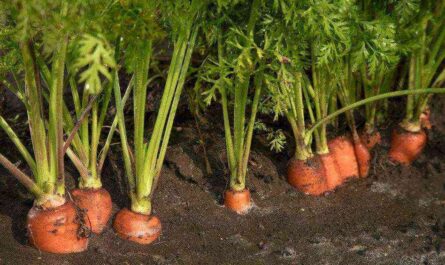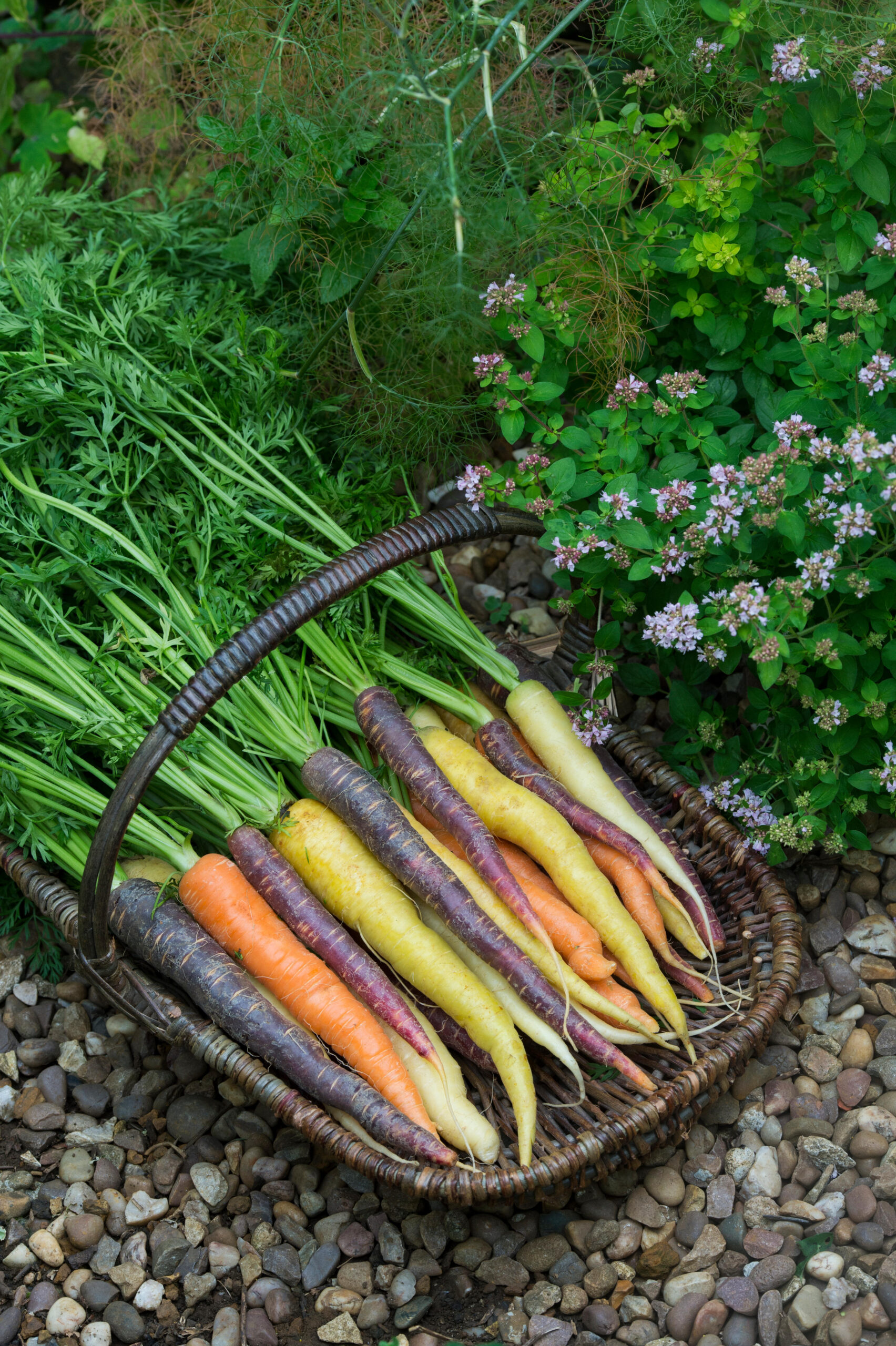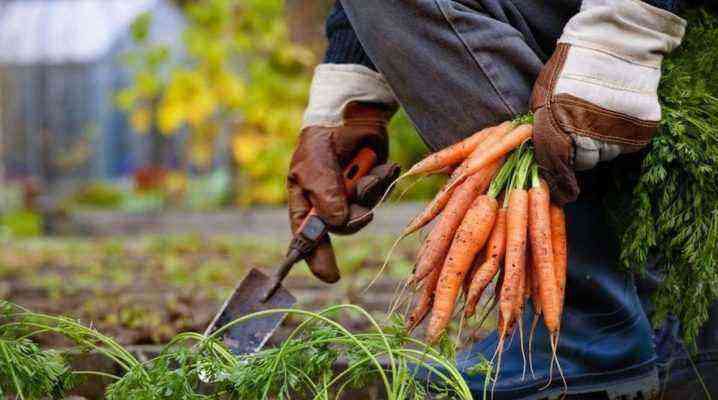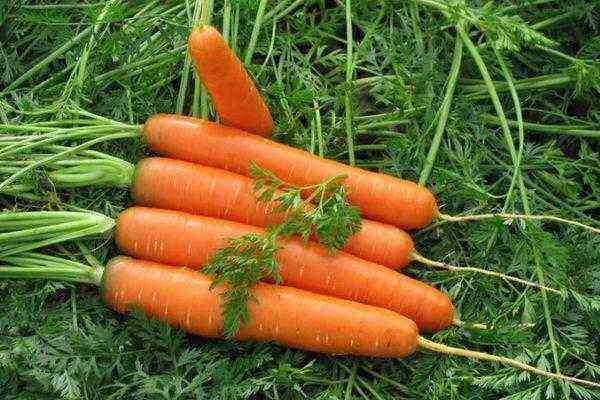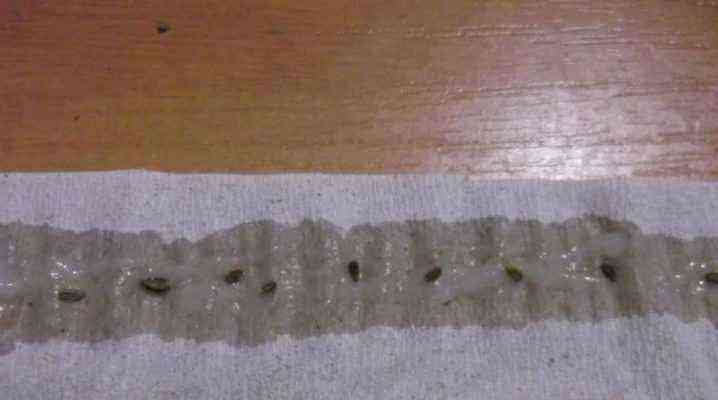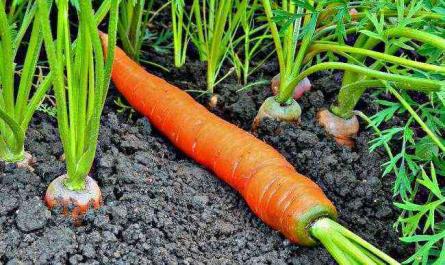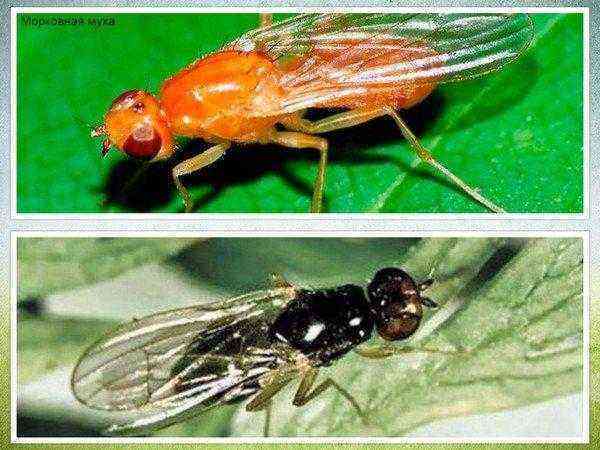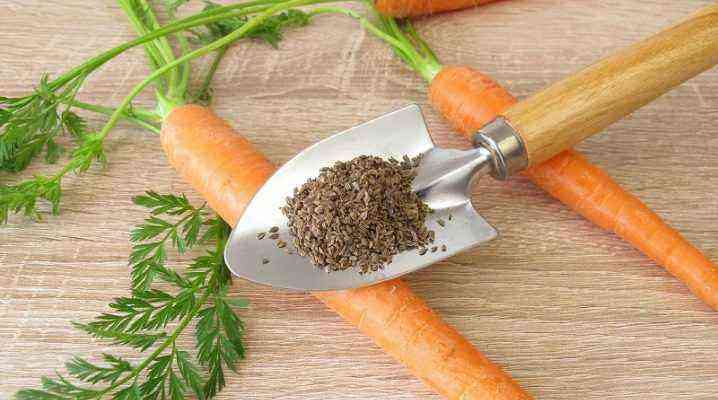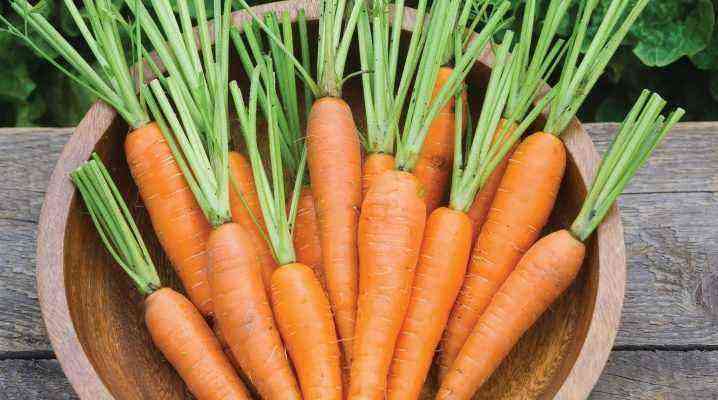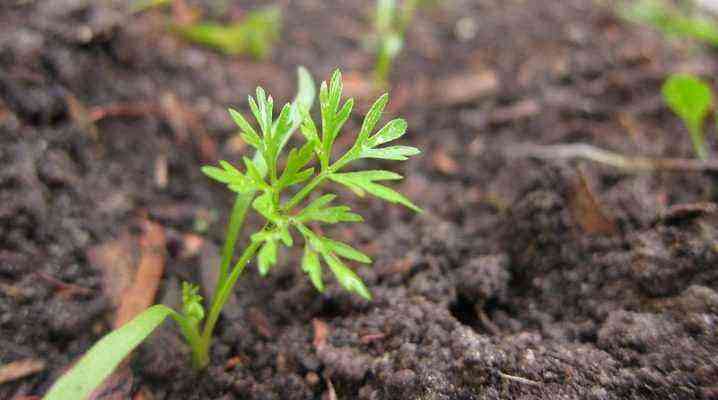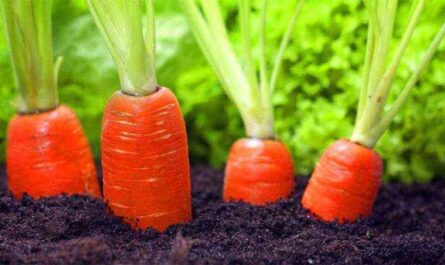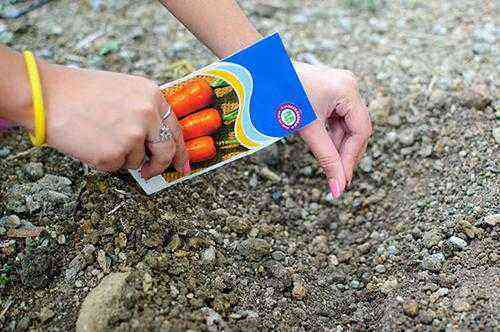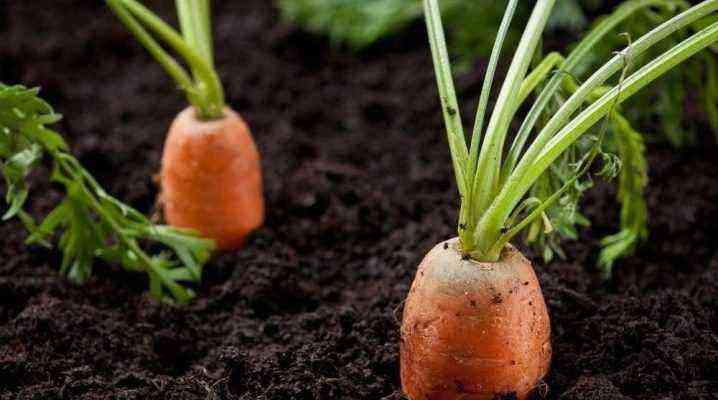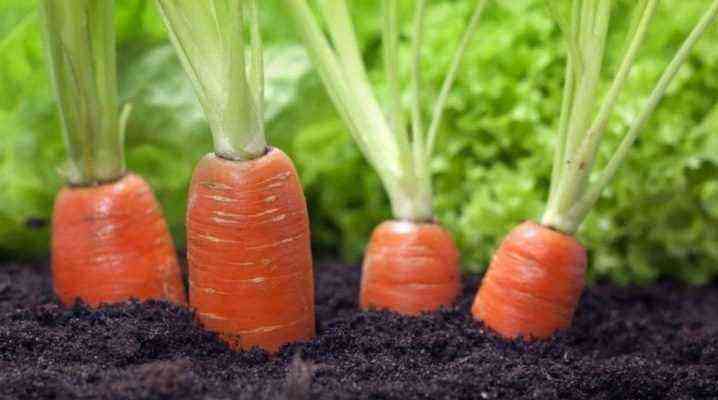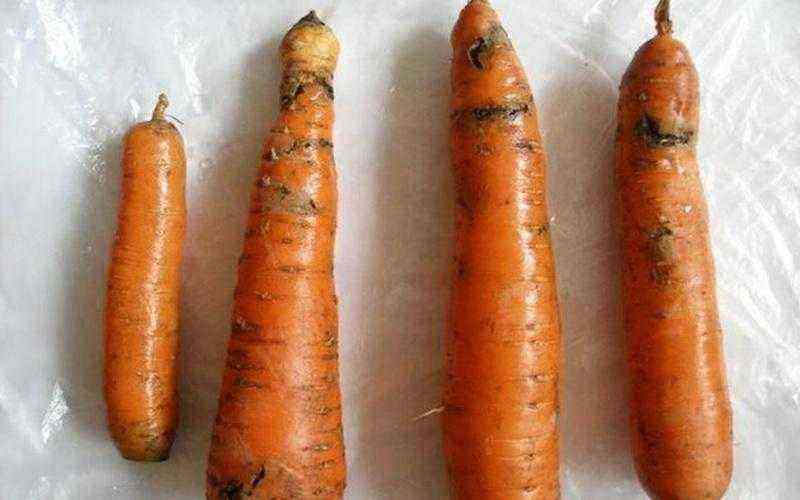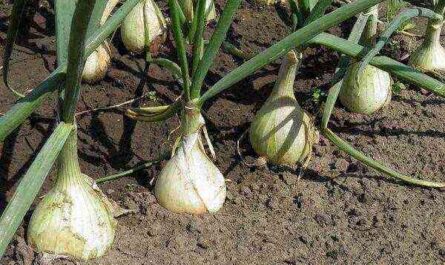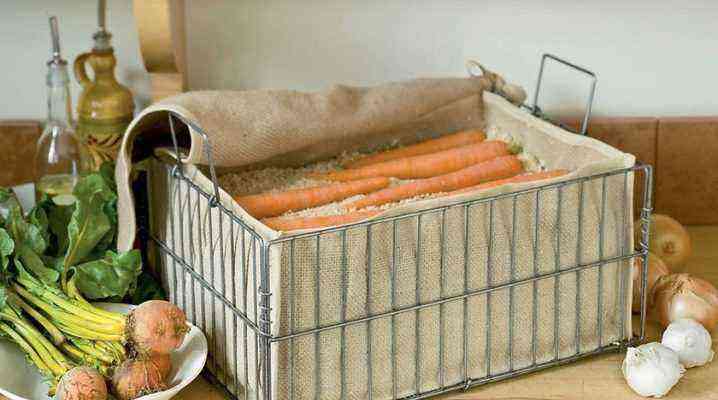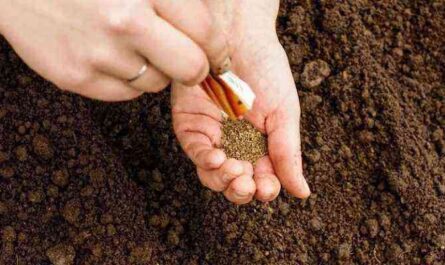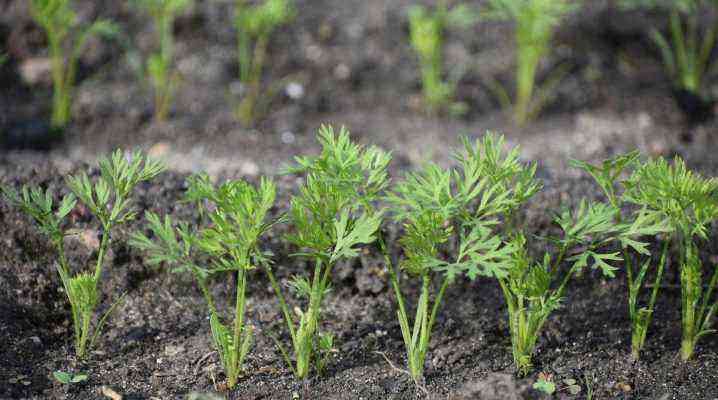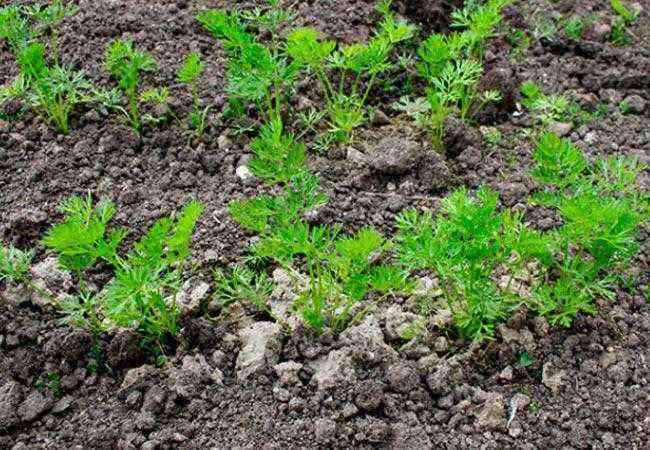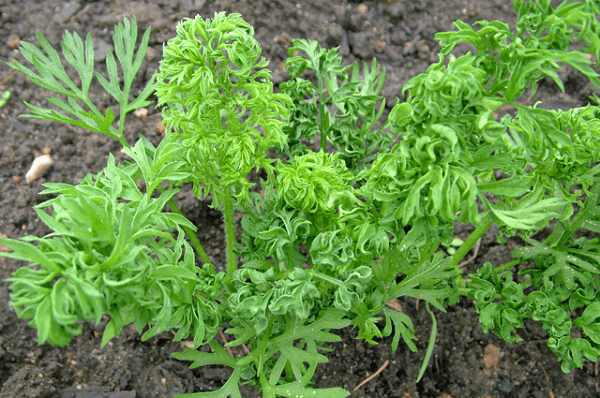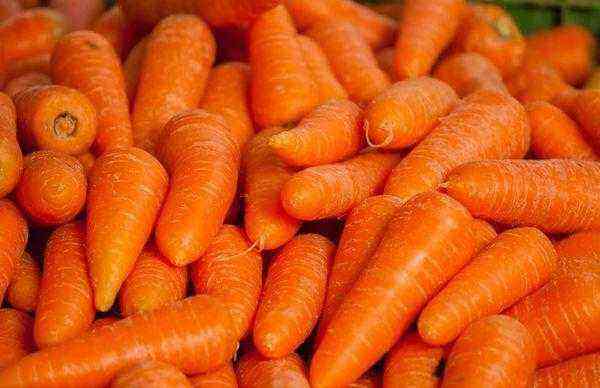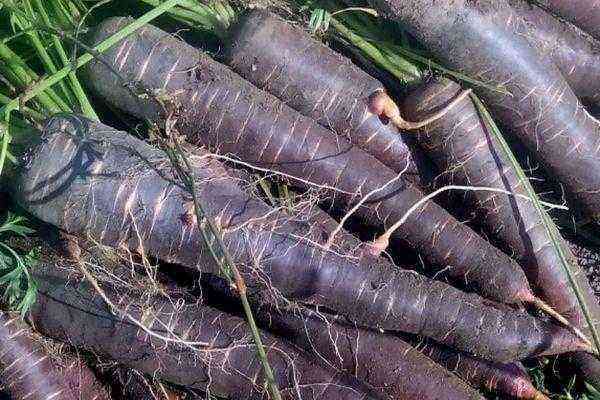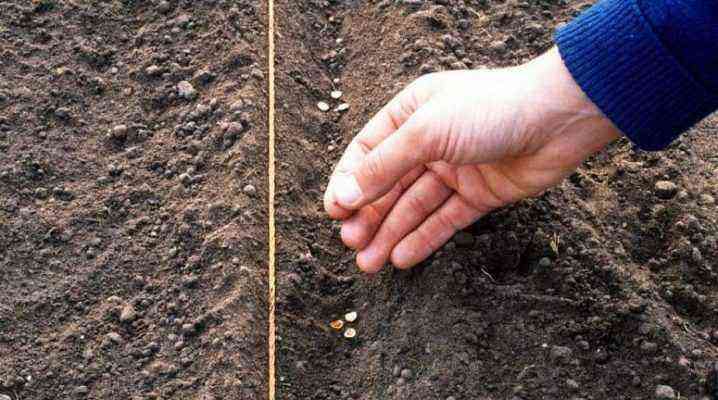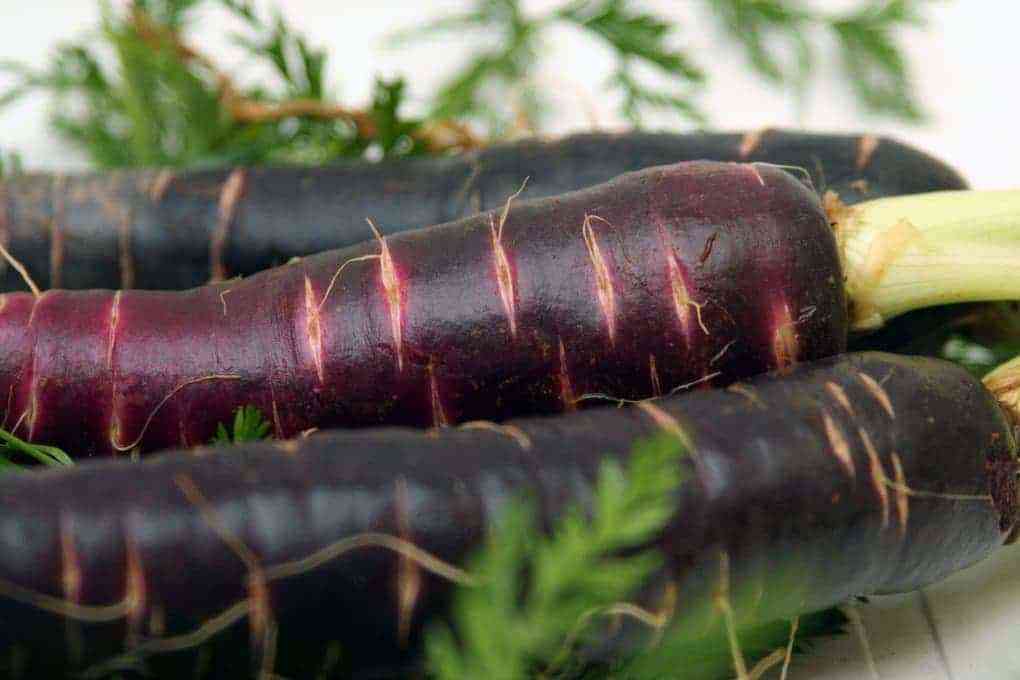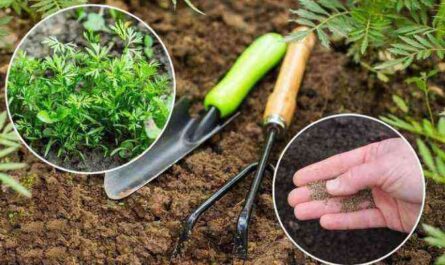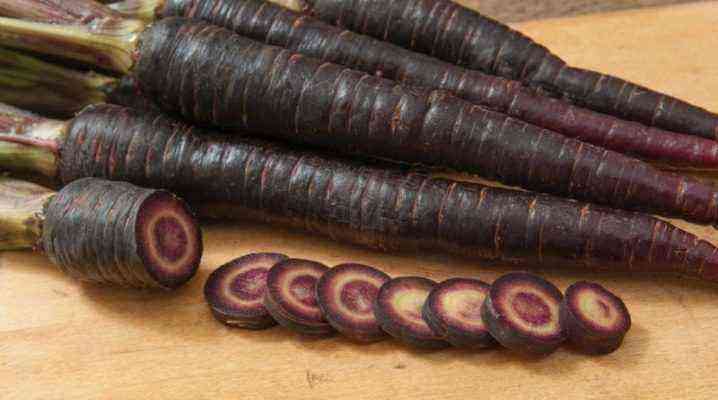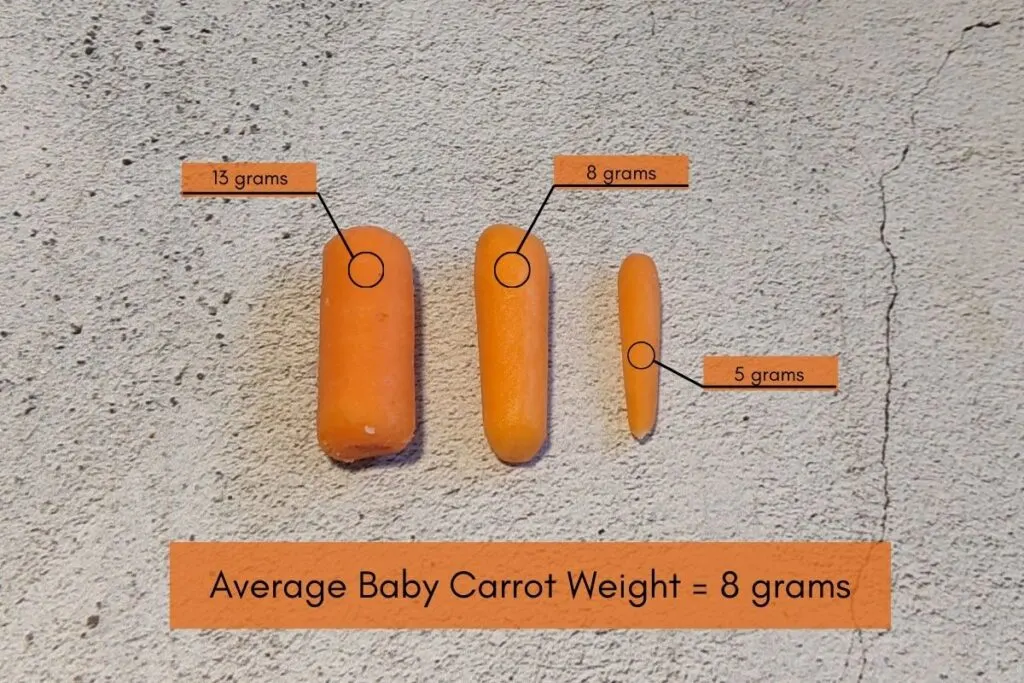Insects and the larvae they lay cause enormous damage to garden plants. One of the dangerous pests is the carrot fly, and only experienced gardeners know how to deal with it with ammonia or other means. To save the crop, it is important to detect traces of insect exposure in a timely manner and take protective measures.
Signs of a pest attack
You can notice the signs of a carrot fly attack at different stages of crop growth. Significant symptoms of an attack include:
- the tops change color to purple with a red tint, and then gradually turn yellow and die;
- affected root crops are covered with growths;
- inside the carrots, passages are formed that gnaw through the larvae of the fly.
The advantages and disadvantages of the method
Treatment with ammonia to combat the carrot fly has become widespread among gardeners. The technique has a number of advantages, including the following:
- High efficiency. The active components of ammonia have a powerful effect on the parasite.
- Availability. The drug can be purchased at a low cost in almost any pharmacy.
- Profitability. It takes a small amount of alcohol to perform one spray, which allows you to slowly consume the product.
- Safety. Ammonium chloride does not affect the taste characteristics and quality of the cultivated crop.
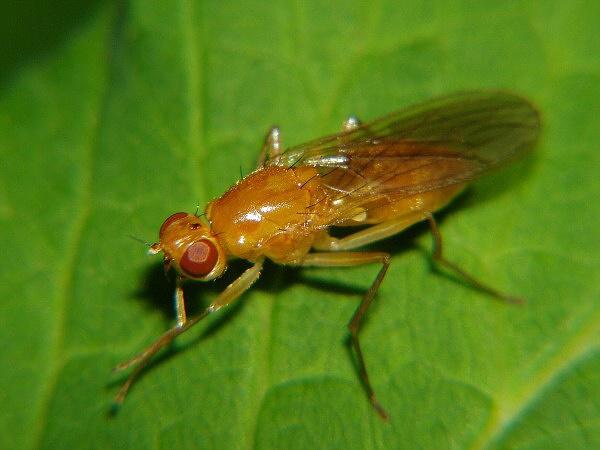
In addition to the obvious advantages of the method, there are several minor disadvantages. When using ammonia, it is necessary to strictly follow the instructions for use so as not to cause harm to health.
In addition, the effect of ammonia is noticeable only after 2-3 sprays.
Terms of Use
You can use ammonia to treat plants by watering or spraying the ground parts of plants. Each of the methods has its own nuances, which should be familiar with in order to achieve effectiveness from protective treatment.
Watering
Carrot beds, when a pest is found, should be watered with a prepared solution. Dissolve 2 ml of ammonia in a bucket of water and mix thoroughly. To make watering more convenient, it is recommended to use a regular watering can.

The regularity of watering depends on the degree of damage to root crops. In most cases, it is optimal to carry out treatment with a solution of ammonia every 4-6 days. If such a frequency is observed, the frightening smell will not completely disappear, and the treatments will not harm the plantations.
Spraying
The processing of the ground part of the garden crop is carried out in the early morning or in the evening after sunset. It is recommended to spray plantations to control carrot fly in calm weather, when precipitation is not expected within the next 10-12 hours.

The cooking process
For irrigation or protective spraying, it is enough to mix ammonia with water, observing the proportion of 2 ml per bucket of liquid. It is important to mix the mixture well, after which you can immediately start processing plantings.
Safety measures
Since the misuse of ammonia can harm human health, safety precautions must be observed when working with the substance. When watering or spraying, protective clothing should be worn, including gloves, a heavy cloth coat and headgear.
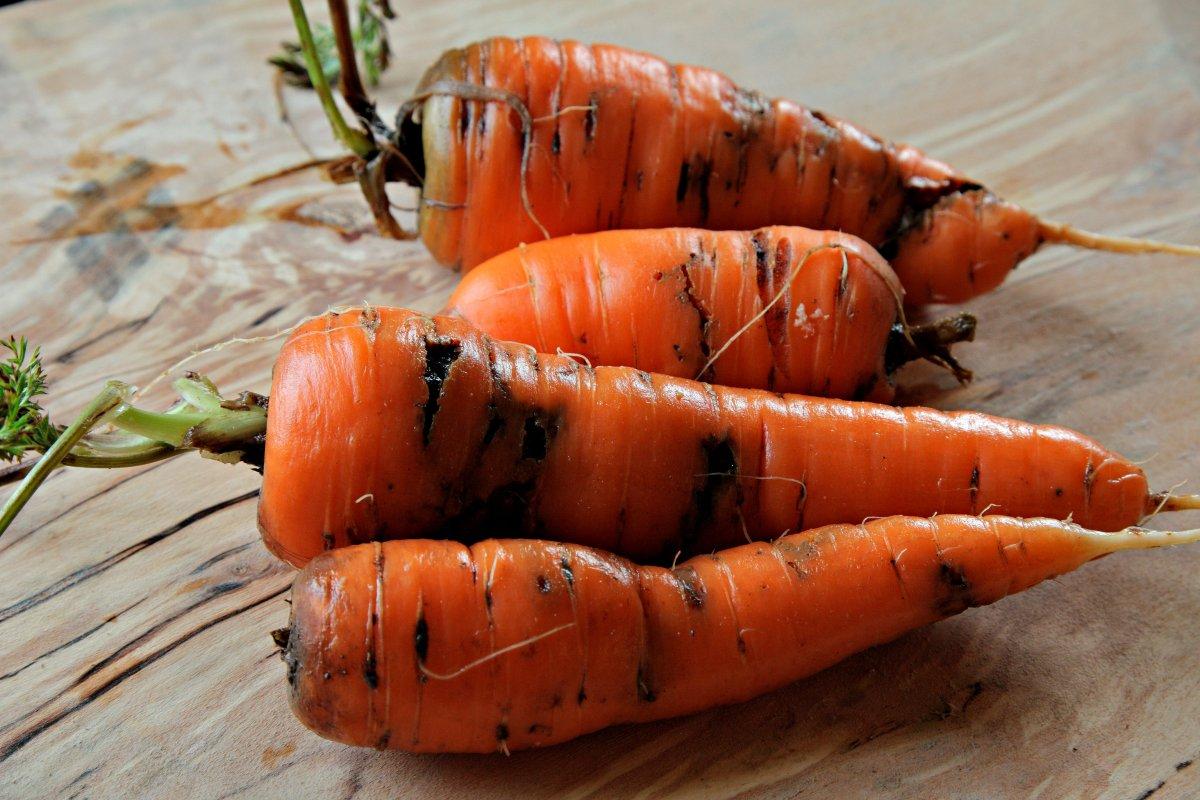
In order to prevent
A solution of ammonia helps to fight not only the carrot fly, but also a number of other harmful insects. To reduce the likelihood of crop damage by parasites, it is recommended to perform preventive treatments on an ongoing basis.
Watering and spraying methods vary depending on the specific pest that can infect root crops.
aphid
Aphids attack many garden plants and vegetables grown indoors. Small green parasites leave larvae on tops, damage the ground part of plants and absorb juices. During one season, insects can cause significant damage to the plantations themselves and future crops.
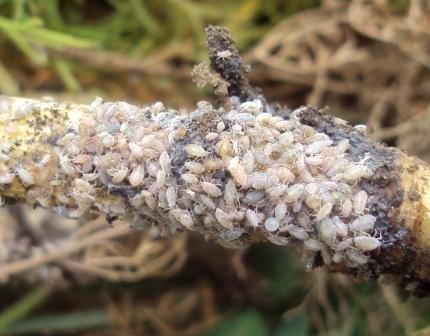
You can treat the beds with root crops from the effects of aphids by spraying or watering under the root. For preparation, a solution of 50 ml of ammonia is dissolved in 7 liters of warm water. Treatment is carried out in the early morning or evening to achieve the greatest effectiveness of prevention.
Ants
Having settled in the beds, the ants are able to actively multiply, destroy the crop, gnaw through the roots and the green part of the plantations. The main role in the fight against ants is played by a pungent specific smell that repels insects. In the case of fighting ants, it is necessary to perform several treatments at intervals of 3-4 days, since the ant queen has the ability to quickly restore the number of parasites in the area.
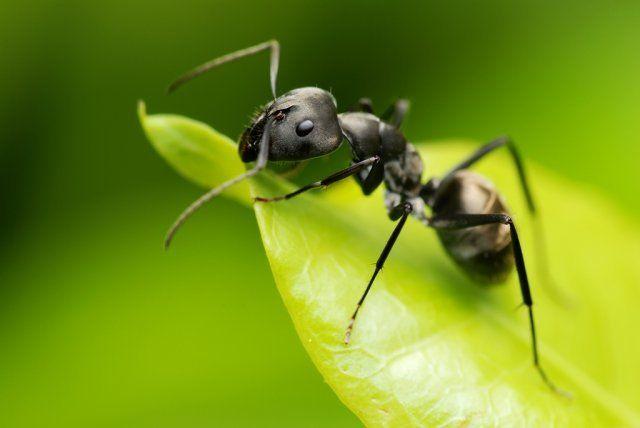
Medvedka
To prevent damage to plants by a bear, ammonia is diluted in a ratio of 10 mg per 10 liters of water. The resulting solution is poured under the root, using 0,5 liters for each planting. You can also use the method of unfolding wetted fabric flaps in the aisle. In this case, the fabric is soaked in undiluted ammonia with a concentration of 3-4%.
It is possible to use the remedy for preventive purposes from the moment the crop is planted and during the entire growing season. An unpleasant smell repels insects, preventing them from spoiling seedlings and future shoots.
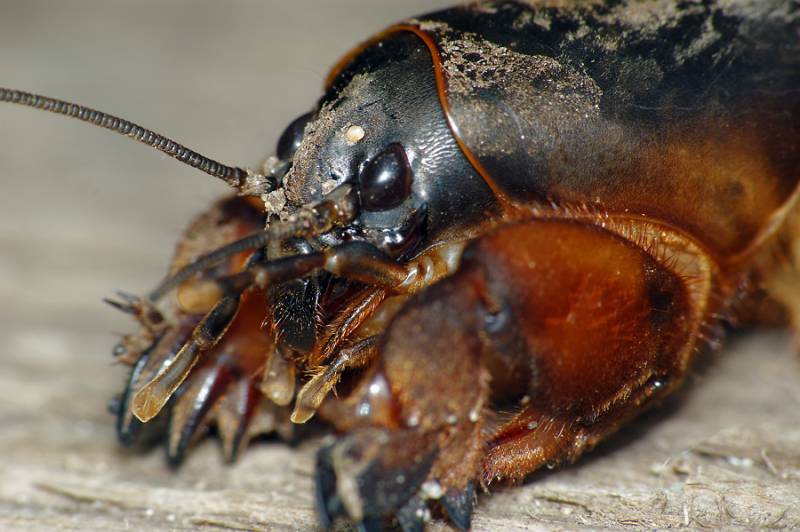
Weevil
Weevil beetles hibernate in the soil and under plant debris, and with the onset of spring they crawl out to the surface and gnaw through the leaves. Also, pests infect root crops, because of which their taste characteristics deteriorate.
To treat the soil from the effects of the weevil, 5 ml of an ammonia solution is dissolved in 25 liters of water.
Watering garden crops is performed every 7-8 days. It should be borne in mind that increased pest activity occurs in warm weather, when the ambient temperature exceeds 10 degrees. Weevils are able to fly long distances, which contributes to the active spread of parasites in their habitat.
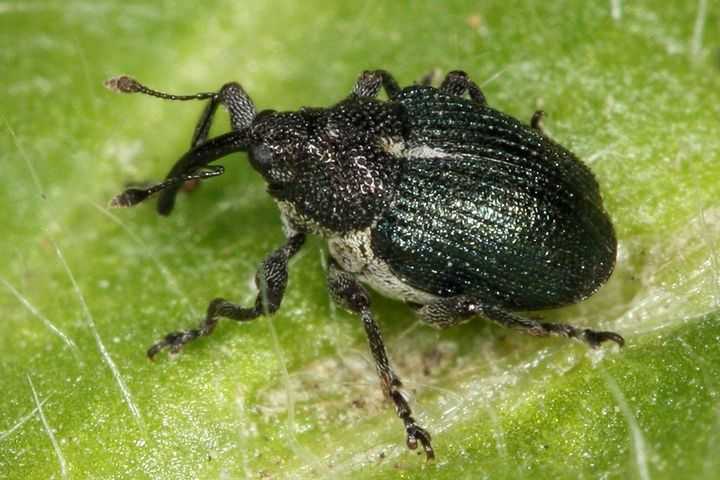
Caterpillars
Living in the beds, the caterpillars gnaw the tops and root crops in a short period. Spraying with a solution of ammonia destroys pests and at the same time is a fertilizer. The composition of ammonia contains about 80% nitrogen, which activates the growth of foliage and stems.
To scare away the caterpillars from the beds, dilute 40 ml of ammonia and 1 tablespoon of laundry soap in 5 liters of water. Before starting processing, it is allowed to remove large caterpillars manually. Spraying is carried out in calm weather.

Reviews
Galina, 47 years old: “I constantly treat the beds with a solution of ammonia – a very effective way. I have not encountered pests for a long time thanks to prevention. The taste of vegetables does not deteriorate even with frequent spraying.
Lydia, 62 years old: “Last season I spent pest control, I decided to try the ammonia treatment method. After several sprayings, we managed to get rid of the parasites and save the crop.”
